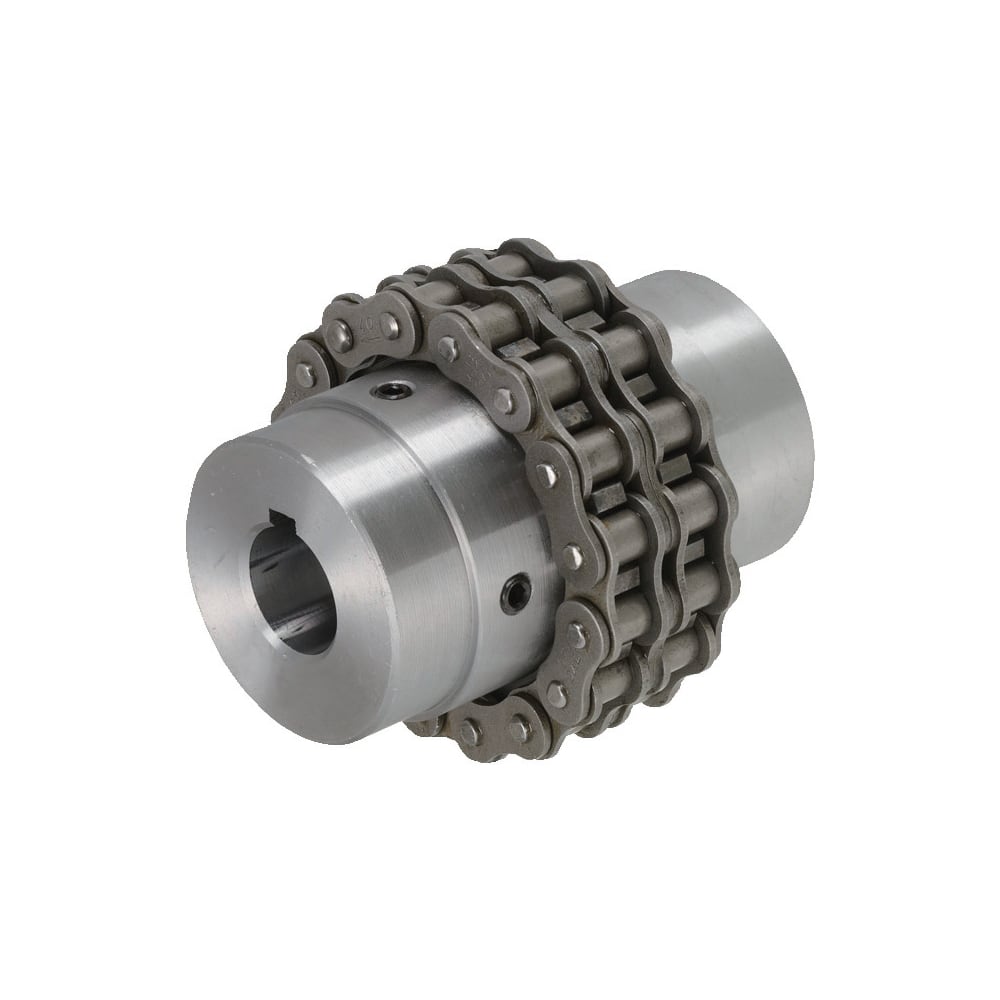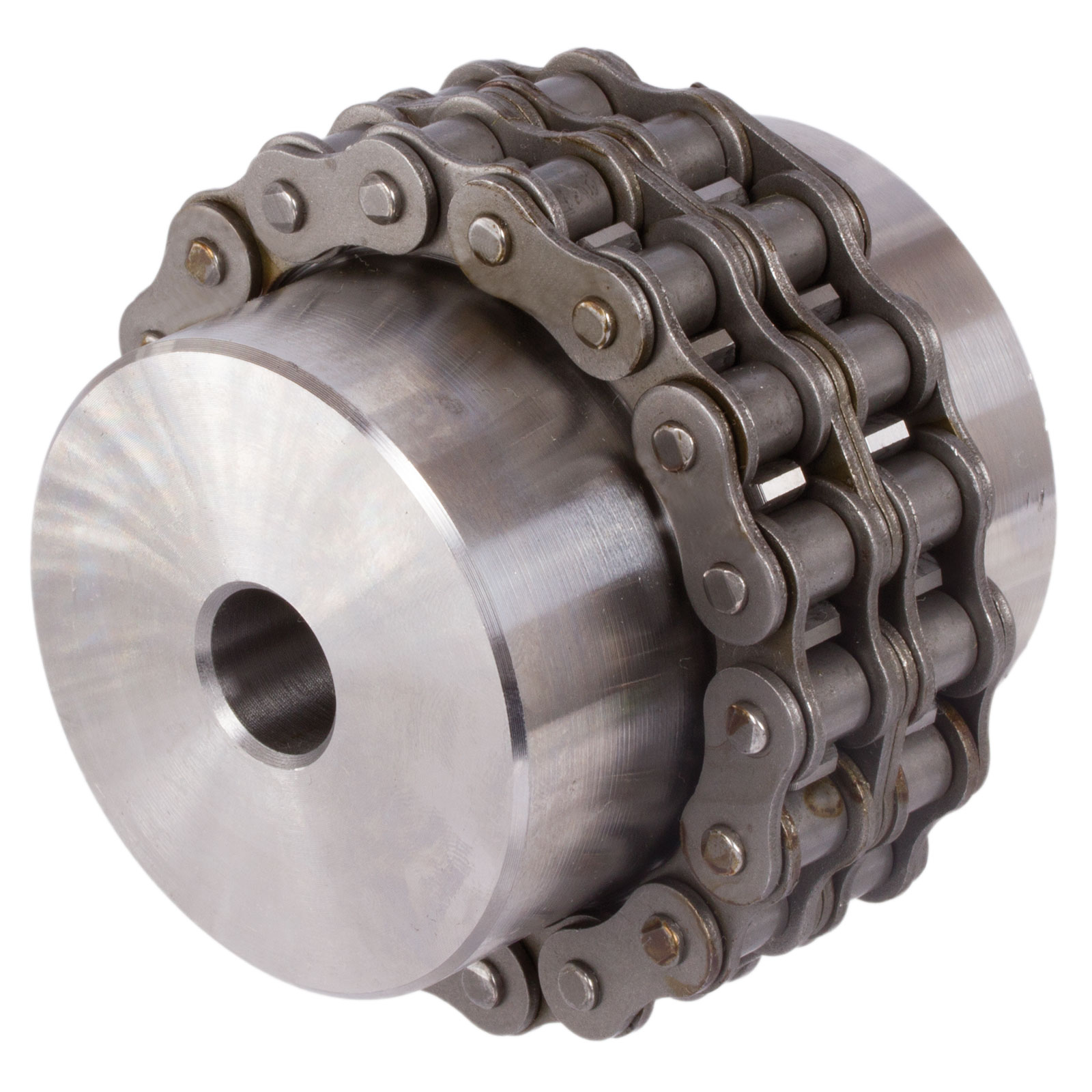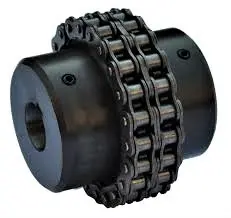Product Description
Roller Chain Coupling 4016
Our Roller Chain Coupling details:
Size: 3012, 4012, 4014, 4016, 5014, 5016, 5018, 6018, 6571, 6571, 8018, 8571, 8571, 10018, 10571, 12018, 12571
Our Roller Chain Coupling Specification:
1. Material: C45 steel, Alloy steel, Aluminum, Rubber and plastic etc.
2. OEM and ODM are available
3. High efficient in transmission
4. Finishing: Painted.
5. High quality with competitive price
6. Different models suitable for your different demands
7. Stock for different bore size on both sides available.
8. Application in wide range of environment.
9. Quick and easy mounting and disassembly.
10. Resistant to oil and electrical insulation.
11. Identical clockwise and anticlockwise rotational characteristics.
12. Small dimension, low weight, high transmitted torque.
13. It has good performance on compensating the misalignment.
Chain Coupling Application:
Chain couplings are offered in the industry’s largest variety of stock bore/keyway combinations. These couplings require no lubrication and provide highly reliable service for light, medium, and heavy duty electrical motor and internal combustion power transmission applications. Applications include power transmission to industrial equipment such as pumps, gear boxes, compressors, blowers, mixers, and conveyors.
/* March 10, 2571 17:59:20 */!function(){function s(e,r){var a,o={};try{e&&e.split(“,”).forEach(function(e,t){e&&(a=e.match(/(.*?):(.*)$/))&&1

Finding Reputable Suppliers or Manufacturers of Roller Chain Couplings
When looking for reputable suppliers or manufacturers of roller chain couplings for your specific power transmission needs, consider the following options:
- Industrial Trade Shows: Attend industrial trade shows and exhibitions related to power transmission and machinery. These events often feature leading manufacturers and suppliers showcasing their products.
- Online Directories: Utilize online directories and platforms that list suppliers and manufacturers of industrial equipment. Look for well-established companies with positive customer reviews and ratings.
- Industry Associations: Contact industry associations related to power transmission or mechanical engineering. They can provide recommendations for reliable coupling manufacturers and suppliers.
- Referrals and Recommendations: Ask for referrals and recommendations from colleagues, industry experts, or other businesses using similar equipment. Word-of-mouth recommendations can help you find trusted suppliers.
- Supplier Websites: Visit the websites of potential suppliers to learn more about their product offerings, certifications, and customer support services.
- Customer Support: Look for manufacturers or suppliers with excellent customer support to assist with technical inquiries, product selection, and after-sales service.
- Customization: If you have unique requirements, consider working with a manufacturer that offers customization options to tailor the coupling to your specific needs.
By researching and comparing different suppliers, you can find a reputable and reliable source for roller chain couplings that meets your power transmission needs.

Materials Used in Manufacturing Roller Chain Couplings
Roller chain couplings are typically constructed from high-quality materials to ensure durability and reliable performance. The most common materials used in their manufacturing include:
- Steel: Steel is a popular choice for roller chain couplings due to its excellent strength and resistance to wear. It can handle high torque and speed requirements, making it suitable for a wide range of industrial applications.
- Stainless Steel: Stainless steel is used when corrosion resistance is required. It is often employed in industries where the coupling is exposed to moisture, chemicals, or harsh environmental conditions.
- Cast Iron: Cast iron is known for its robustness and excellent heat dissipation properties. It is commonly used in applications where shock absorption and reduced vibrations are essential.
- Aluminum: Aluminum is a lightweight material that offers good strength-to-weight ratio. It is commonly used in applications where reducing the overall weight of the system is critical.
- Nickel-Plated: Nickel-plated roller chain couplings provide enhanced corrosion resistance, making them suitable for applications in challenging environments.
When selecting a roller chain coupling, it is essential to consider the specific requirements of the application, including torque, speed, environment, and potential exposure to corrosive substances. Choosing the right material ensures the coupling’s longevity and efficient power transmission in the intended operating conditions.

Key Design Considerations for Roller Chain Couplings in Power Transmission Systems
When using roller chain couplings in power transmission systems, several key design considerations should be taken into account:
- Torque and Power Ratings: Calculate the required torque and power ratings to ensure the roller chain coupling can handle the expected loads and prevent overloading.
- Speed: Consider the operating speed of the coupling to select a roller chain and sprocket combination that can handle the rotational speed without experiencing excessive wear or fatigue.
- Shaft Sizes: Ensure that the roller chain coupling’s sprockets are compatible with the shaft sizes of the connected equipment. Proper fit is crucial to transmit torque effectively and prevent slippage.
- Misalignment: Assess the potential misalignments between the shafts and choose a roller chain coupling that can accommodate the expected angular, parallel, and axial misalignments to reduce stress on the system.
- Service Environment: Consider the operating conditions, such as temperature, humidity, and exposure to contaminants, and select roller chain coupling materials that can withstand the environmental factors for extended service life.
- Lubrication: Determine the lubrication requirements of the roller chain coupling and establish a maintenance schedule to ensure proper lubrication and prevent premature wear.
- Space Limitations: Take into account any spatial restrictions or limitations in the installation area to select a roller chain coupling that fits within the available space.
- Alignment Maintenance: Plan for periodic alignment checks and adjustments to maintain the optimal performance of the roller chain coupling and extend its service life.
- Cost: Evaluate the budget constraints and compare the cost of different roller chain coupling options to choose the most cost-effective solution without compromising performance.
By considering these design factors, engineers can ensure that the roller chain coupling performs optimally and provides reliable power transmission in their specific power transmission systems.


editor by CX 2024-01-23